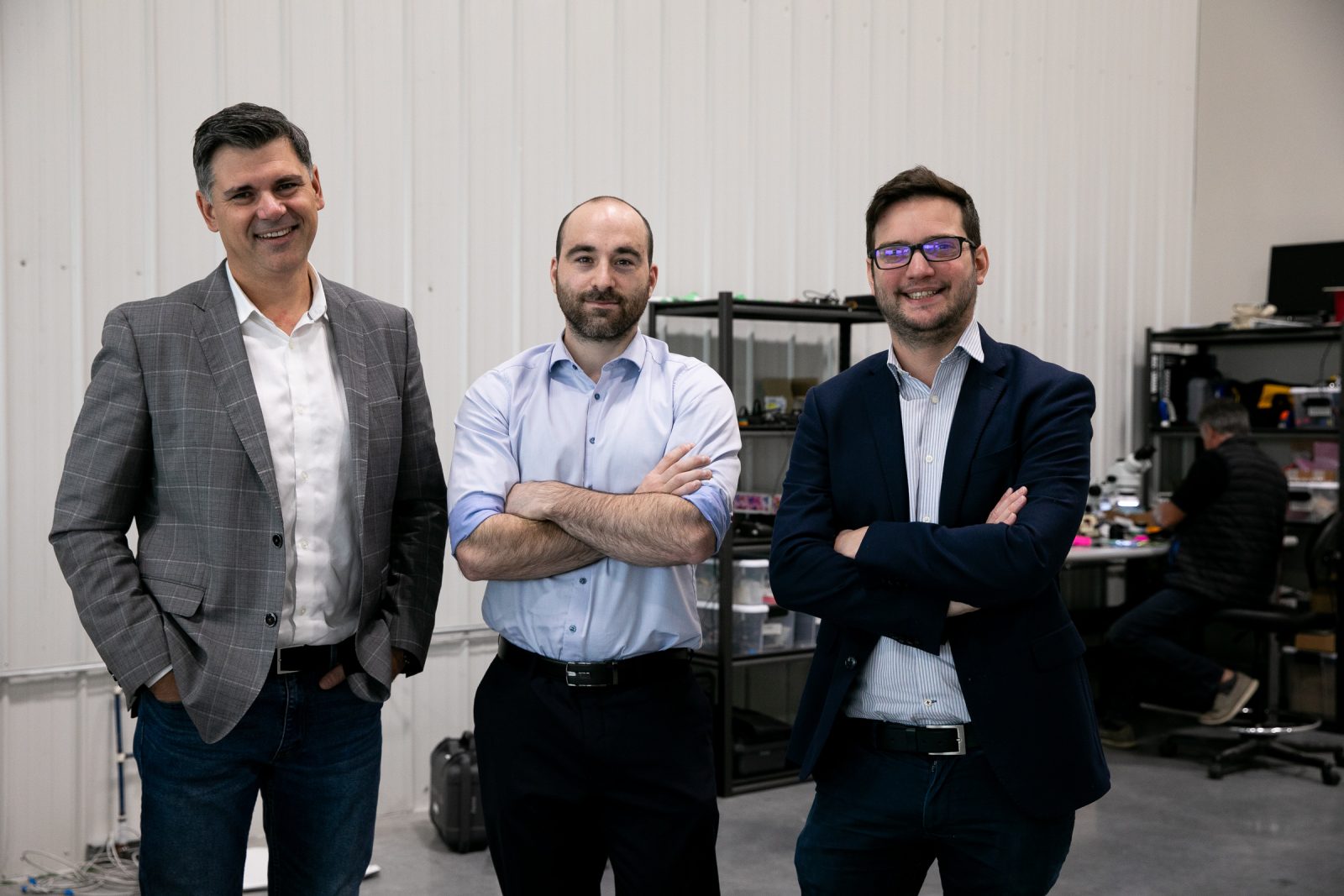A start-up company from Saint-Jean-sur-Richelieu has developed a new wireless energy transfer solution for charging batteries. Quaze Technologies is working with Rheinmetall Canada to integrate this innovative system into autonomous military ground vehicles.
“The basic idea is to be able to transmit energy to any device, anywhere, in any context, without requiring human intervention to physically connect to the robotics,” says Francis Roy, president and director of strategy at Quaze.
The basic concept consists of a large-scale, magnetic resonance-powered platform. This “base”, capable of delivering up to 500 watts, allows multiple electronic or robotic devices to be charged simultaneously without the need to connect a cable. It is functional anywhere, regardless of the weather conditions, whether it is snowing or raining. The company even goes so far as to claim that its technology would work in space.
“Following the technology presentation in London on Rheinmetall’s autonomous vehicle being built at its Saint-Jean plant, Quaze was the most clicked news story in the defense world. Around fifteen articles were published worldwide during the week of the event. Our prototype confirms that there is a need in the military sector,” says Francis Roy.
Army drones
The global launch of the product took place with great fanfare in London last September. Quaze and Rheinmetall Canada, a company also based in Saint-Jean-sur-Richelieu, caused a sensation at Defense and Security Equipment International 2023, a renowned trade fair in the defense and security sector.
Currently, Quaze has developed platforms that allow remotely piloted or autonomous surveillance drones to land and recharge using the batteries of unmanned Mission Master vehicles built by Rheinmetall for the military. The partnership between the two Johannes companies began a year ago.
In its 4,000 square meter workshop on Boulevard Saint-Luc, Quaze makes the transmitters that look like routers, the surfaces and the receivers that allow the devices to charge their batteries. The components installed on the drones are created using 3D printers.
“As soon as the drone lands, it receives energy to recharge before it can take off again. The device can be placed on the surface without precise alignment. The principle “It’s comparable to a gas station where you fill up before you leave,” explains Mr. Roy. The latter adds that a drone can take over if the battery level of the flying drone has become low. Thanks to a sensor, the drone charges on the platform as soon as another charged drone arrives next to it.
Electric cars
Energy can be transferred by simply approaching the surface, even if it is covered with materials such as asphalt, wood or quartz. For example, it could be installed in a parking lot to charge electric cars.
“We are currently focused on charging smaller devices that require less power, but yes, our technological principle could certainly work when charging electric cars in parking lots,” says Philippe Boulanger, co-founder of Quaze and an aerospace engineer studying at Polytechnique Montreal was trained.
Energy surface
The Quaze technology prototype looks like a cardboard placemat less than a centimeter thick, with electronic components similar to those of a computer inserted into it. For example, the technology could be installed under a desk to power a computer. It would also serve as a loading mat for industrial robots moving in a defined space.
“We don’t ignore the office and industrial aspects. We will first focus on our current army drone technology. Currently, Quaze is primarily dedicated to the security and defense sector. The Department of Defense is probably the largest user of drones right now. It could potentially be used for larger autonomous devices,” says Mr Boulanger.
Progress
The Quaze company is led by Philippe Boulanger, Xavier Bidaut, co-founder and electrical engineering engineer, and Francis Roy. The latter comes from the business world. “Saint-Jean wants to develop an innovation zone in public and civil security and defense. “Quaze fits perfectly into this direction,” mentions Francis Roy.
The General Director of NexDev | Carole Cardinal, Economic Development of Haut-Richelieu, is pleased that Quaze has decided to establish itself in Saint-Jean. “It’s extraordinary what they do. It is a company that we have supported from the beginning and continue to pursue. The region is building an ecosystem of innovation in civil and public safety,” she says.
The company currently employs a team of eight people. She wants to increase this to around twenty by the end of the year. Quaze is primarily looking for engineers.
The founders of Quaze named their company after quasars. This is a reference to the brightest objects in the universe that emit the most powerful streams of energy.

Extreme problem solver. Professional web practitioner. Devoted pop culture enthusiast. Evil tv fan.




;Composite=(type=URL,url=https://images.radio-canada.ca/v1/assets/elements/16x9/outdated-content-2021.png),gravity=SouthEast,placement=Over,location=(0,0),scale=1)


